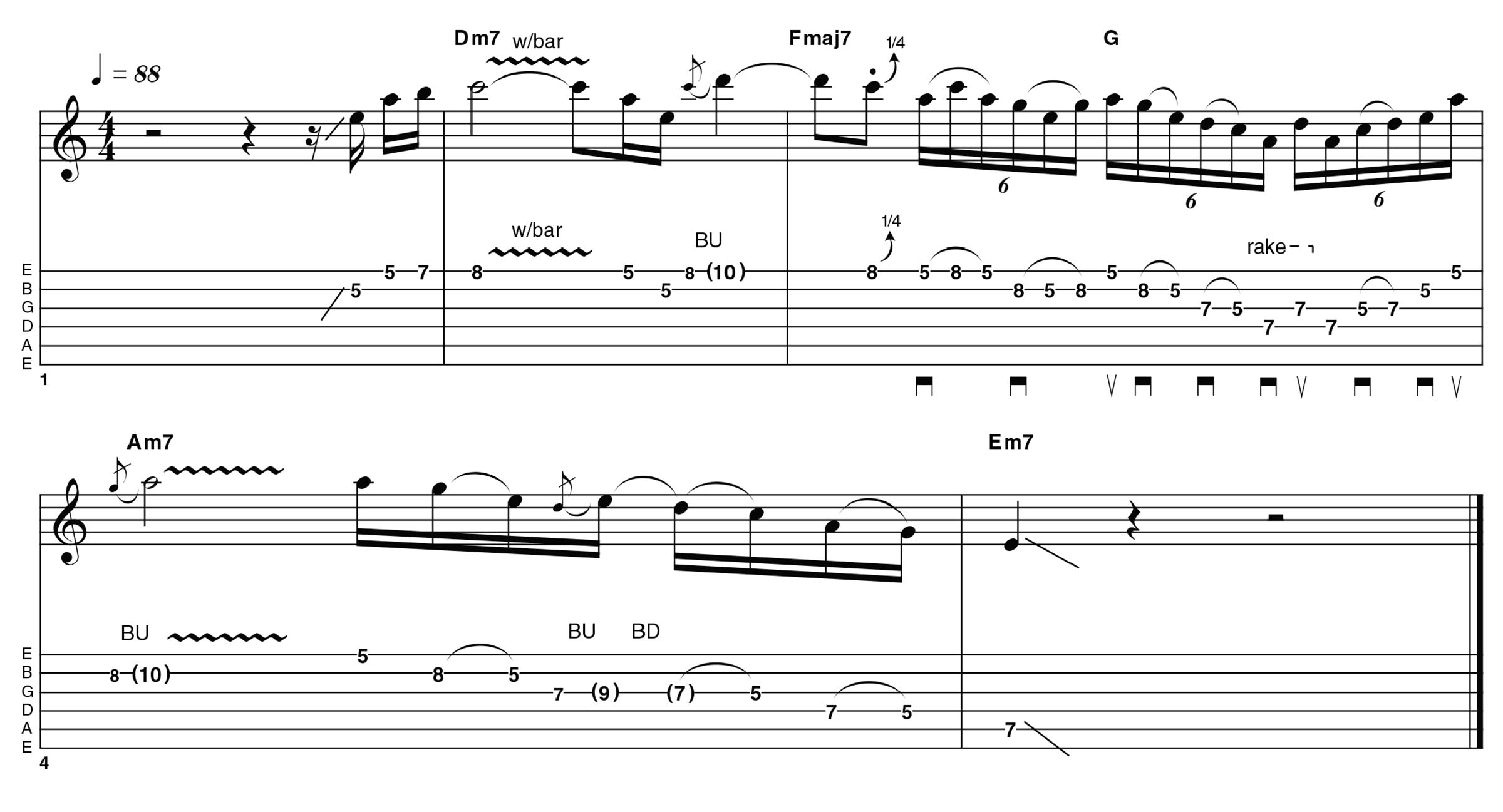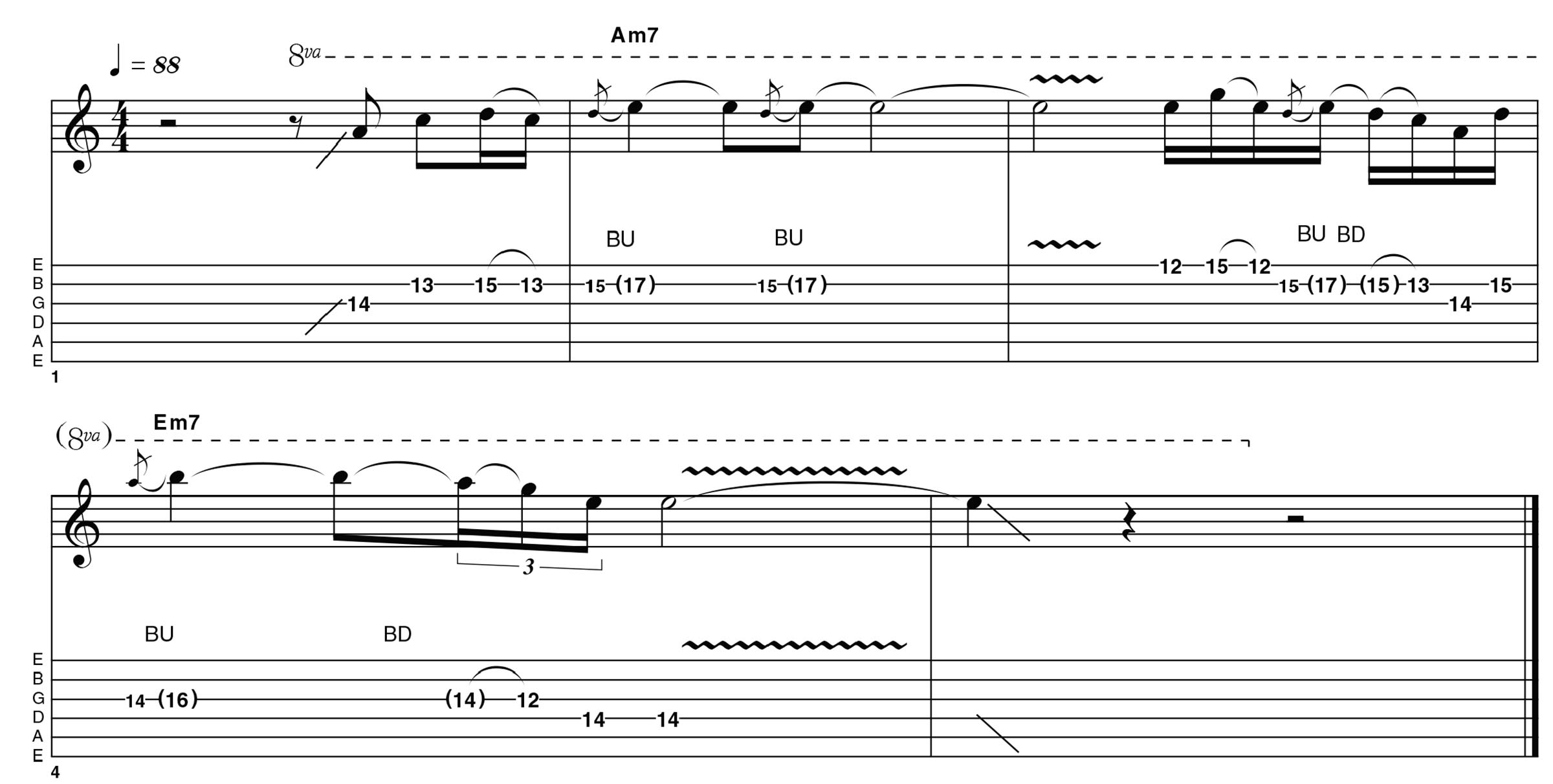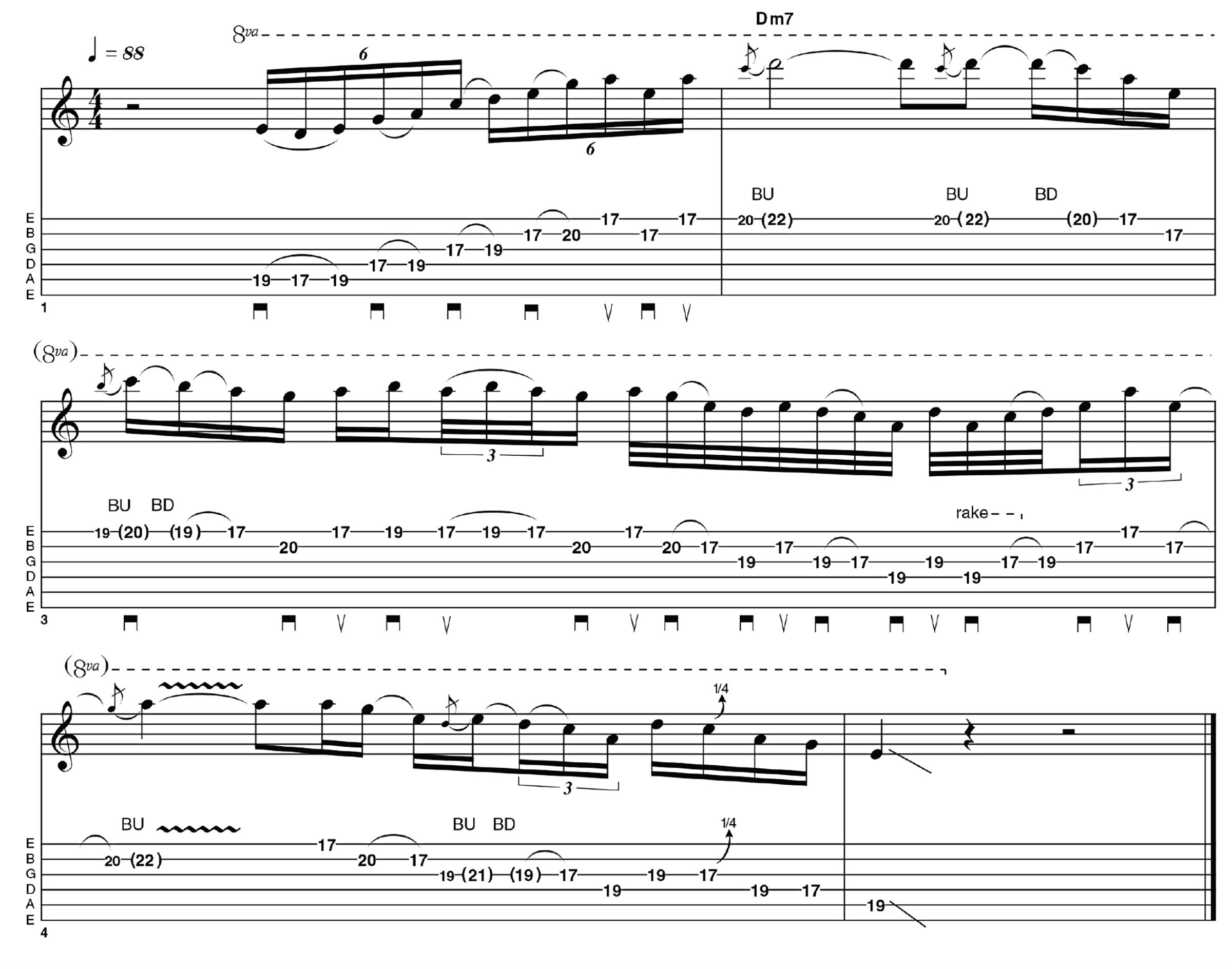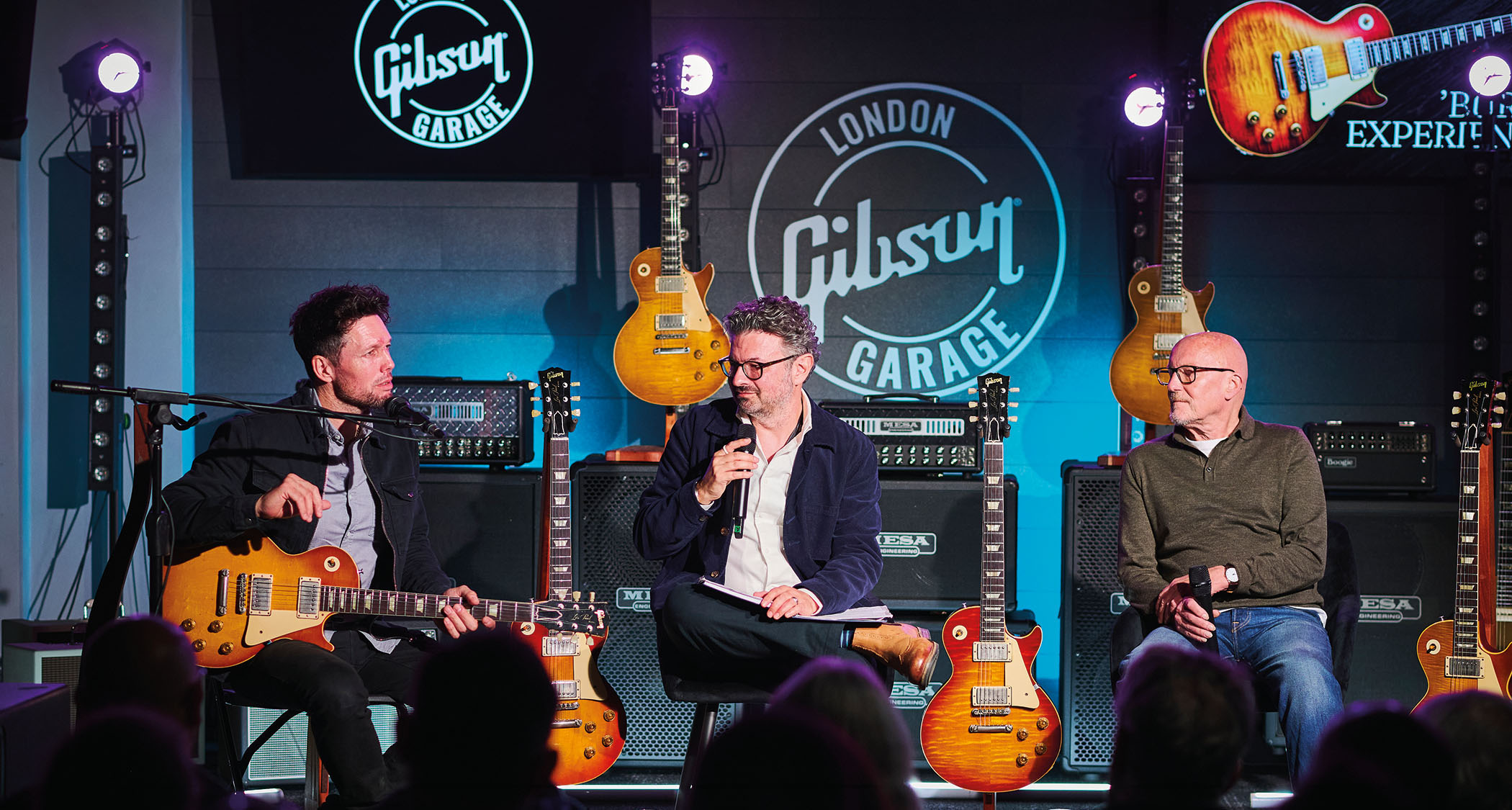He was one player with a Les Paul, another altogether with a Strat – from heartbreaking vibrato to fire-breathing leads, Gary Moore was one of the blues’ most versatile guitarists
This Gary Moore lesson teaches you two sides to the late blues icon’s playing
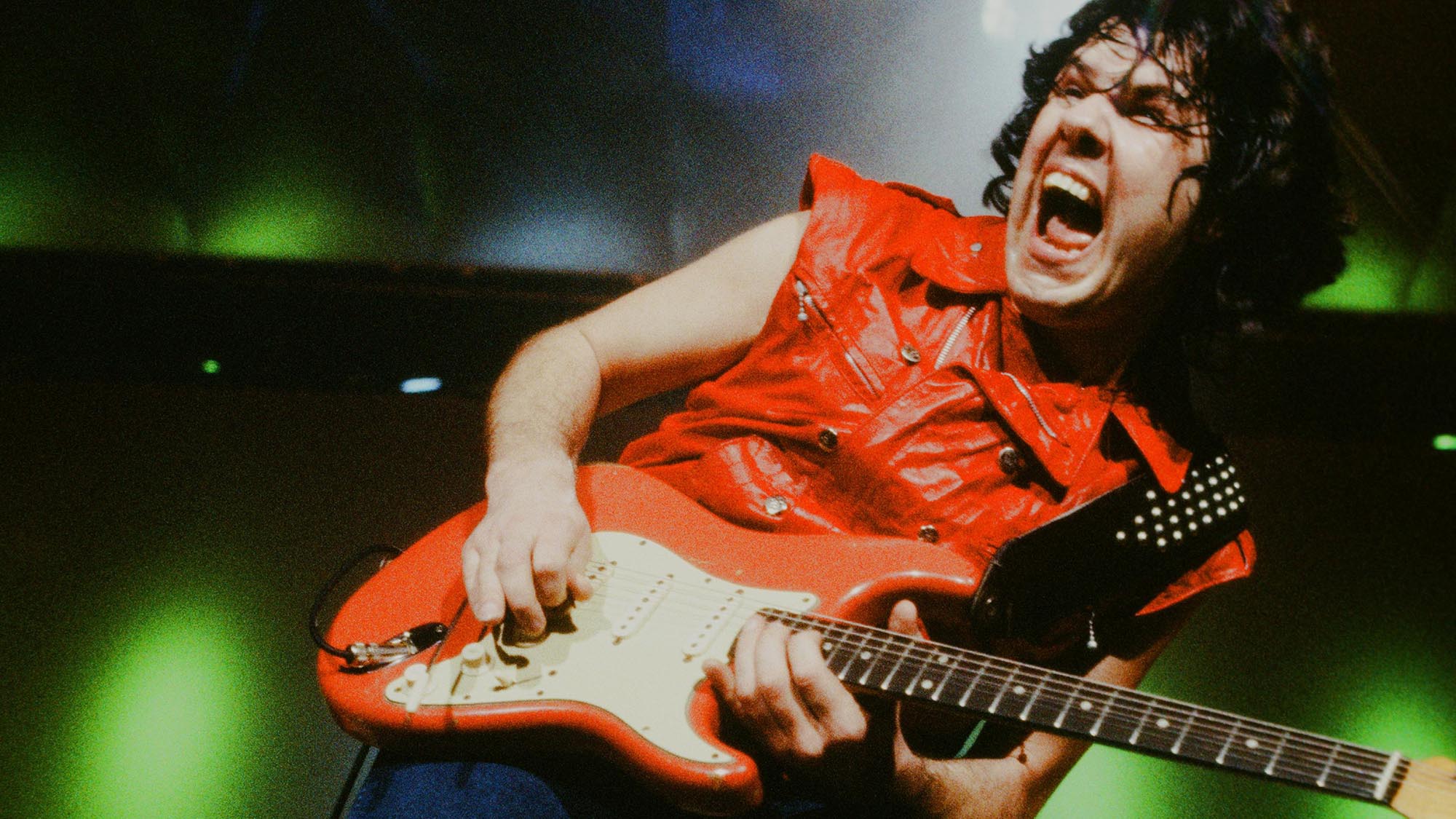
It’s often said that the sound comes from the player rather than the guitar. For example, there’s a well-travelled anecdote about Ted Nugent picking up Eddie Van Halen’s guitar at a soundcheck and sounding like Ted Nugent, even through Eddie’s rig.
While there’s a lot of truth in such stories, it’s also correct to say that different guitars can influence how we play. Gary Moore’s differing approaches to playing a Strat or Les Paul are great example of this.
While still unmistakably Gary Moore, there are ways he explores the different tone and features of each instrument, some of which I’ve aimed to highlight in the two example solos below.
Gary often favoured a Strat in the mid-to-late ’70s. On Colosseum II’s Electric Savage from 1977, you can hear the characteristic wide vibrato he would get from the vibrato arm – similar to Ritchie Blackmore on Deep Purple’s Black Night at times, though with a touch of Jeff Beck in there, too.
Of course, the ‘Greeny’ Les Paul (the fabled ’59 once belonging to Peter Green) also had some time in the spotlight. Gary’s own Back On The Streets album from 1978 features a mix of Strat and Les Paul, with the Strat often being employed for the cleaner, more sensitive moments.
By the early ’80s, Gary had moved primarily to Strats, especially his red ’61, though Ibanez, Charvel and Hamer also came in to play later in that same decade. Most of these had humbuckers and a locking vibrato, which seemed to encourage Gary’s more ‘Les Paul’ approach.
By 1990, Gary had switched primarily to blues, but this had always been a key ingredient of his style, even in his ’70s ‘fusion’ period. The second solo refers more to this period with some faster licks, but it’s a bit more relaxed than the rocker of the previous decade.
All the latest guitar news, interviews, lessons, reviews, deals and more, direct to your inbox!
Example 1
In this first half there’s far less gain, which encourages more bluesy, rhythmic phrasing, as opposed to searing bends and sustain. The introductory phrase starts out with A minor pentatonic shape 1, but quickly slides to shape 2 for beat 1 of the first full bar.
This gives the A that many players would bend to from within shape 1, but sliding to the 10th fret and using the bar gives a different character. The second half could also be described as shape 2, but strictly speaking the change to E minor underneath makes it a shape 4 E minor pentatonic.
Example 2
I’m using the bar to add vibrato on the first phrase, rather than the bend that would be necessary to do this on a Les Paul. The rest of this example is taken from the shape 1 A minor pentatonic (with the exception of that one slide).
This section showcases how Gary would use the pentatonic to create fast phrases with many – but not all – of the notes picked. He had a particular way of doing this, so make sure you check out the directions in the transcription.
Example 3
Turning up the gain and using a Les Paul-style guitar gives us a different sound and phrasing options. Gary had a way of nailing the pitch of a bend without ‘covering his tracks’ with vibrato, which is a tricky thing to master.
We’re starting here in shape 4 of the A minor pentatonic, then morphing into the E minor pentatonic (shape 1). High gain such as this leads to handling noise and/or feedback, so Gary would tend to make a feature of the handling noise or zero the guitar’s volume control if he wanted silence.
Example 4
This final phrase uses the shape 1 A minor pentatonic, an octave above where we began back in Example 1.
Pay close attention to the way this travels across the strings: the picking patterns may seem counterintuitive at first, but they are the key to how Gary would create fast but relaxed two-note-per-string pentatonic runs in many of his solos. At volume, you may need to be ready to zero the guitar’s volume control to avoid unwanted feedback!
Hear it here
Colosseum II – Electric Savage
Recorded in late 1976, this album is reportedly live off the studio floor without overdubs – and it certainly gives a good representation of what the band must have sounded like live.
Check out Gary’s aggressive Strat-playing and distinctive vibrato use on Put It This Way and All Skin & Bone. Elsewhere on the record, he brings out a more sensitive side to his playing, notably on Am I, with shades of David Gilmour at times, though that gives way to some stunning picking later.
Gary Moore – Back on the Streets
Recorded in 1978, there are a few styles on display, some harking back to Colosseum II as well as duets with Phil Lynott in advance of Gary’s appearance on Thin Lizzy’s Black Rose album.
There are clear attempts at a hit single, but a clear winner was Parisienne Walkways. It’s interesting to come back to the original; this kind of restraint and control is an often neglected facet of Gary’s style. Also, check out Don’t Believe A Word and Song For Donna to hear his contrasting Strat/Les Paul approaches.
Gary Moore – Power of the Blues
Released in 2004, more than a decade after Gary’s initial shift to the blues, his playing here remains as intense as ever but with a considered effort to include fewer of the trademark fast runs.
It’s clear this is still available when required, though: listen to the play-out on There’s A Hole as well as the solo in Getaway Blues. Elsewhere, Gary combines traditional-sounding blues phrasing with contemporary production flourishes, such as his distinctive use of the wah on Evil.
As well as a longtime contributor to Guitarist and Guitar Techniques, Richard is Tony Hadley’s longstanding guitarist, and has worked with everyone from Roger Daltrey to Ronan Keating.


